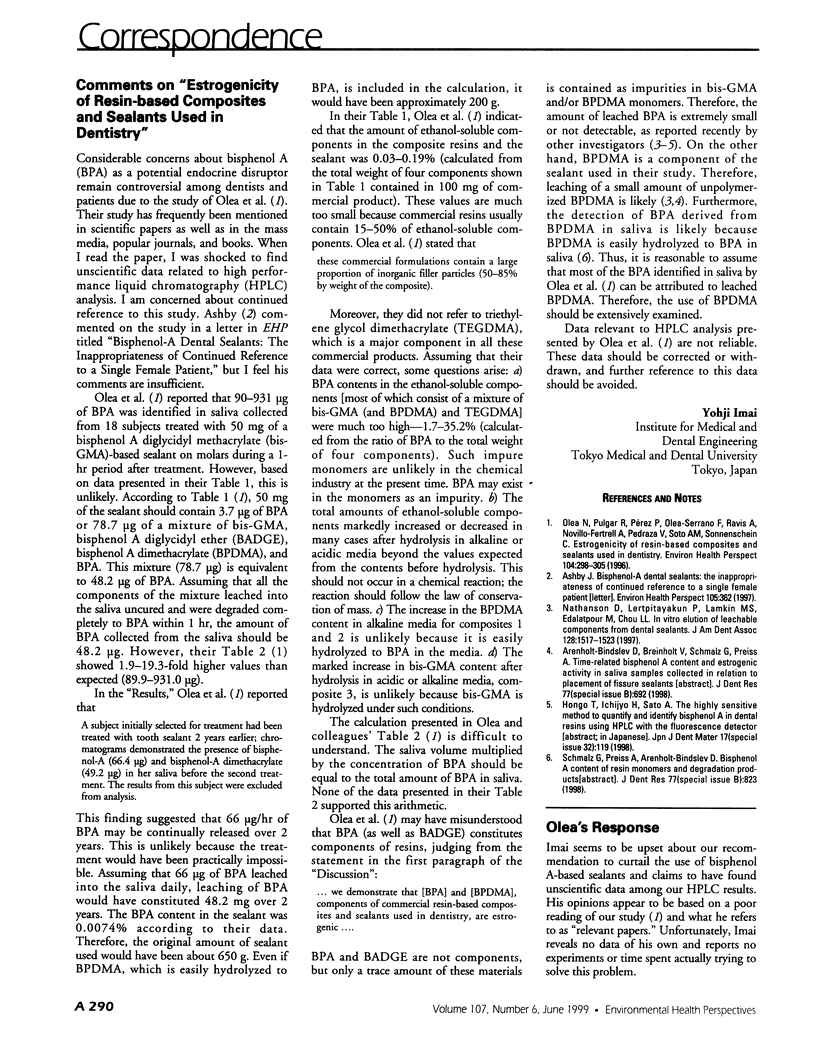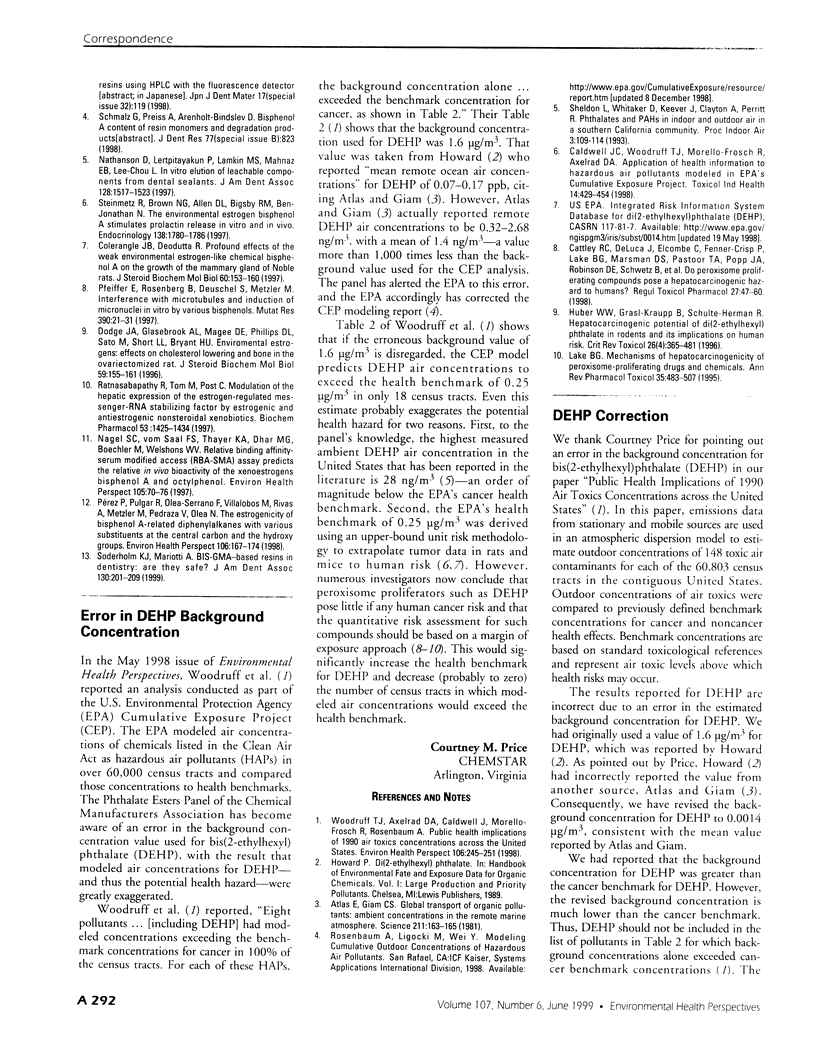Full text
PDF


Selected References
These references are in PubMed. This may not be the complete list of references from this article.
- Colerangle J. B., Roy D. Profound effects of the weak environmental estrogen-like chemical bisphenol A on the growth of the mammary gland of Noble rats. J Steroid Biochem Mol Biol. 1997 Jan;60(1-2):153–160. doi: 10.1016/s0960-0760(96)00130-6. [DOI] [PubMed] [Google Scholar]
- Dodge J. A., Glasebrook A. L., Magee D. E., Phillips D. L., Sato M., Short L. L., Bryant H. U. Environmental estrogens: effects on cholesterol lowering and bone in the ovariectomized rat. J Steroid Biochem Mol Biol. 1996 Oct;59(2):155–161. doi: 10.1016/s0960-0760(96)00104-5. [DOI] [PubMed] [Google Scholar]
- Nagel S. C., vom Saal F. S., Thayer K. A., Dhar M. G., Boechler M., Welshons W. V. Relative binding affinity-serum modified access (RBA-SMA) assay predicts the relative in vivo bioactivity of the xenoestrogens bisphenol A and octylphenol. Environ Health Perspect. 1997 Jan;105(1):70–76. doi: 10.1289/ehp.9710570. [DOI] [PMC free article] [PubMed] [Google Scholar]
- Nathanson D., Lertpitayakun P., Lamkin M. S., Edalatpour M., Chou L. L. In vitro elution of leachable components from dental sealants. J Am Dent Assoc. 1997 Nov;128(11):1517–1523. doi: 10.14219/jada.archive.1997.0091. [DOI] [PubMed] [Google Scholar]
- Olea N., Pulgar R., Pérez P., Olea-Serrano F., Rivas A., Novillo-Fertrell A., Pedraza V., Soto A. M., Sonnenschein C. Estrogenicity of resin-based composites and sealants used in dentistry. Environ Health Perspect. 1996 Mar;104(3):298–305. doi: 10.1289/ehp.96104298. [DOI] [PMC free article] [PubMed] [Google Scholar]
- Perez P., Pulgar R., Olea-Serrano F., Villalobos M., Rivas A., Metzler M., Pedraza V., Olea N. The estrogenicity of bisphenol A-related diphenylalkanes with various substituents at the central carbon and the hydroxy groups. Environ Health Perspect. 1998 Mar;106(3):167–174. doi: 10.1289/ehp.98106167. [DOI] [PMC free article] [PubMed] [Google Scholar]
- Pfeiffer E., Rosenberg B., Deuschel S., Metzler M. Interference with microtubules and induction of micronuclei in vitro by various bisphenols. Mutat Res. 1997 Apr 24;390(1-2):21–31. doi: 10.1016/s0165-1218(96)00161-9. [DOI] [PubMed] [Google Scholar]
- Ratnasabapathy R., Tom M., Post C. Modulation of the hepatic expression of the estrogen-regulated mRNA stabilizing factor by estrogenic and antiestrogenic nonsteroidal xenobiotics. Biochem Pharmacol. 1997 May 15;53(10):1425–1434. doi: 10.1016/s0006-2952(97)00084-1. [DOI] [PubMed] [Google Scholar]
- Steinmetz R., Brown N. G., Allen D. L., Bigsby R. M., Ben-Jonathan N. The environmental estrogen bisphenol A stimulates prolactin release in vitro and in vivo. Endocrinology. 1997 May;138(5):1780–1786. doi: 10.1210/endo.138.5.5132. [DOI] [PubMed] [Google Scholar]
- Söderholm K. J., Mariotti A. BIS-GMA--based resins in dentistry: are they safe? J Am Dent Assoc. 1999 Feb;130(2):201–209. doi: 10.14219/jada.archive.1999.0169. [DOI] [PubMed] [Google Scholar]


